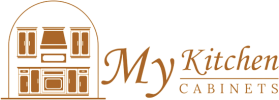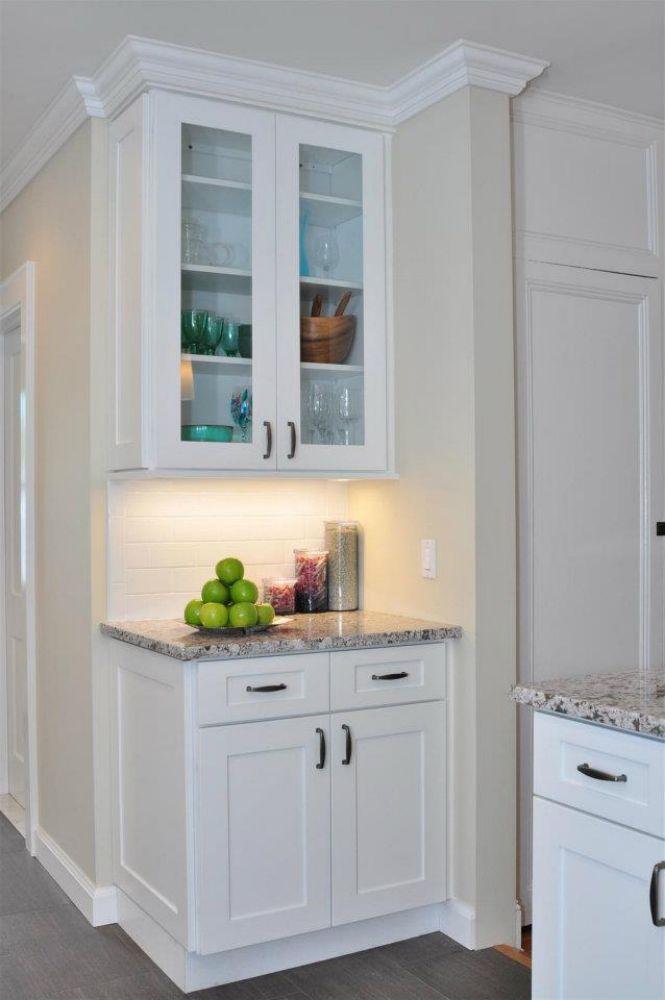Understanding How Humidity and Temperature Affect Kitchen Cabinets
When choosing kitchen cabinets, one of the most important yet often overlooked factors is how well they can withstand humidity and temperature fluctuations. Kitchens naturally experience frequent changes in heat and moisture—from boiling pots, steaming dishwashers, and daily cooking activities. Over time, these conditions can cause warping, cracking, delamination, or discoloration in poorly constructed cabinets.
At My Kitchen Cabinets, we understand that durability and long-term performance are just as important as style. Selecting the right materials and finishes ensures that your cabinets maintain their strength and beauty even in challenging environments. In this comprehensive guide, we’ll explore which kitchen cabinets are most resistant to humidity and temperature changes, comparing materials, construction methods, and protective finishes to help you make an informed investment.
Why Moisture Resistance Matters in Kitchen Cabinetry
1. Daily Exposure to Moisture and Heat
Unlike other areas of the home, kitchens experience constant temperature variations and moisture exposure. Steam from cooking, splashes from sinks, and heat from ovens can all affect cabinet stability.
2. Preventing Warping and Swelling
Cabinet materials such as natural wood tend to absorb moisture, causing them to expand and contract. Without proper sealing, this leads to warping, joint separation, or finish damage.
3. Maintaining Structural Integrity
High humidity can weaken adhesives and degrade low-quality materials over time. Choosing durable materials and finishes ensures your cabinets retain their structure, even in damp climates or coastal regions.
4. Longevity and Value
Moisture-resistant cabinets last longer and require less maintenance, saving homeowners money in repairs and replacements.
Factors That Influence Cabinet Moisture Resistance
1. Material Composition
The type of wood or engineered product used plays a major role in how well cabinets resist moisture.
2. Construction Quality
Well-built cabinets with tight joints, strong adhesives, and quality hardware provide better protection against environmental stress.
3. Finishing and Sealing
Protective coatings, paints, and sealants act as a barrier, preventing moisture from penetrating the material.
4. Placement and Ventilation
Cabinets placed near sinks, dishwashers, or stoves face greater risk of humidity damage. Proper ventilation and insulation around appliances help minimize this exposure.
The Best Materials for Humidity-Resistant Kitchen Cabinets
1. Plywood Cabinets: A Top Performer
Plywood is one of the most reliable materials for humidity and temperature resistance. It’s constructed by layering thin sheets of wood veneer with alternating grain directions, creating superior strength and stability.
Advantages:
-
Highly resistant to warping and swelling.
-
Stronger and more durable than particleboard or MDF.
-
Performs well in both dry and humid environments.
-
Ideal for both base and wall cabinets.
Why It Works:
The cross-grain layering prevents plywood from expanding and contracting significantly with temperature changes. When sealed with a protective finish, it becomes one of the best materials for long-lasting kitchen cabinetry.
2. Marine-Grade Plywood for Ultimate Durability
For homes in high-humidity regions or near coastlines, marine-grade plywood takes resistance a step further. It’s made with waterproof adhesives and high-quality veneers to withstand extreme moisture exposure.
Advantages:
-
Designed for environments with constant humidity or occasional water contact.
-
Virtually impervious to delamination and rot.
-
Used in boats and outdoor furniture for its durability.
Best For:
Outdoor kitchens, coastal homes, or high-moisture indoor environments where humidity is persistent.
3. Medium-Density Fiberboard (MDF) with Moisture Resistance
MDF is an engineered wood made from compressed wood fibers, resin, and wax. While standard MDF is not moisture-resistant, moisture-resistant (MR) MDF—sometimes called “green MDF”—is specially treated to perform better in humid conditions.
Advantages:
-
Smooth surface ideal for painting and modern finishes.
-
Stable and resistant to warping if properly sealed.
-
More affordable than solid wood or plywood.
Important Note:
To prevent swelling, all edges and surfaces must be properly sealed or laminated. MR MDF is suitable for kitchen cabinets in moderately humid environments, especially when protected with high-quality finishes.
4. High-Density Fiberboard (HDF)
HDF is denser and more water-resistant than regular MDF. It offers superior stability and is often used for cabinet doors or decorative panels.
Advantages:
-
Resistant to expansion and contraction.
-
Provides a smooth surface for high-gloss or painted finishes.
-
Strong and impact-resistant.
Ideal For:
Modern kitchen designs that require sleek, consistent finishes and durability against moisture fluctuations.
5. Solid Wood Cabinets (Properly Sealed)
Solid wood is timeless and beautiful, but it requires careful treatment to remain stable in humid environments. Woods like maple, cherry, and oak expand and contract with temperature changes, which can cause warping if not properly sealed.
How to Protect Solid Wood Cabinets:
-
Use a high-quality finish or polyurethane coating.
-
Maintain stable indoor humidity levels (ideally 30–50%).
-
Avoid placing unprotected cabinets near heat sources.
Tip:
If you prefer the look of solid wood, opt for cabinet doors made of wood and cabinet boxes made of plywood to balance aesthetics and performance.
6. Thermofoil Cabinets
Thermofoil cabinets consist of MDF or HDF covered with a vinyl layer that’s heat-sealed to create a smooth, durable surface.
Advantages:
-
Extremely resistant to moisture and easy to clean.
-
Available in various colors and finishes, including wood grain patterns.
-
Affordable compared to solid wood.
Drawbacks:
Prolonged exposure to high heat can cause peeling, so avoid installing them directly near ovens or stoves without heat shields.
7. Laminate Cabinets
Laminate is another excellent choice for humid environments. It’s made by fusing layers of resin-coated paper or fabric onto a substrate such as MDF or particleboard.
Advantages:
-
Resistant to stains, moisture, and heat.
-
Easy to maintain and clean.
-
Available in both matte and high-gloss finishes.
Types of Laminate:
-
High-Pressure Laminate (HPL): More durable and moisture-resistant, ideal for kitchen cabinets.
-
Low-Pressure Laminate (LPL): Suitable for low-traffic areas or budget-friendly options.
8. Stainless Steel Cabinets
For ultimate resistance to humidity and temperature changes, stainless steel cabinets are unmatched. They are completely impervious to water and heat damage.
Advantages:
-
100% resistant to moisture, rust, and temperature fluctuations.
-
Extremely durable and hygienic.
-
Perfect for modern and industrial-style kitchens.
Considerations:
While stainless steel is nearly indestructible, it can show fingerprints and smudges easily. It’s also more expensive than wood or laminate options.
How Finishes and Coatings Protect Against Moisture
1. Catalyzed Conversion Varnish
This finish provides a durable, moisture-resistant barrier while maintaining the natural look of wood. It’s one of the toughest coatings available for kitchen use.
2. Polyurethane Sealants
A clear, protective coating that resists water and heat damage. Available in matte or glossy finishes.
3. UV-Cured Finishes
UV-cured coatings harden instantly under ultraviolet light, creating a strong and scratch-resistant surface. They also protect against color fading and moisture penetration.
4. Paint with Sealant
High-quality cabinet paints include moisture-resistant polymers that protect against humidity, especially when paired with a polyurethane topcoat.
Construction Techniques That Enhance Durability
1. Dovetail Joinery
Used in drawer boxes, dovetail joints offer exceptional strength and resist separation caused by wood movement.
2. Full-Back Panels
Cabinets with full plywood backs (rather than thin mounting strips) are more resistant to warping and offer better stability in humid conditions.
3. Reinforced Corner Blocks
Adds strength to cabinet frames, preventing twisting or misalignment caused by expansion.
4. Sealed Edges and Interiors
Water-resistant edge banding and sealed interiors prevent moisture from seeping into the cabinet box.
The Role of Proper Installation and Ventilation
Even the most moisture-resistant materials need correct installation to perform well.
1. Maintain Ventilation
Good airflow reduces humidity buildup. Range hoods, dehumidifiers, and proper spacing around appliances prevent moisture accumulation.
2. Avoid Direct Water Contact
Seal joints near sinks, dishwashers, and backsplashes to prevent water intrusion.
3. Ensure Level and Secure Installation
Improper installation can lead to gaps or stress points that let in moisture over time.
4. Climate Control
If you live in areas with extreme temperature changes, maintaining consistent indoor humidity (between 30–50%) helps extend your cabinets’ lifespan.
Comparing Cabinet Materials by Humidity Resistance
| Material | Humidity Resistance | Temperature Stability | Maintenance Level | Cost Range |
|---|---|---|---|---|
| Marine-Grade Plywood | Excellent | Excellent | Low | $$$ |
| Regular Plywood | Very Good | Excellent | Low | $$ |
| Moisture-Resistant MDF (Green MDF) | Good | Good | Moderate | $–$$ |
| High-Density Fiberboard (HDF) | Very Good | Good | Low | $$ |
| Solid Wood (Sealed) | Moderate | Fair | Moderate | $$$ |
| Thermofoil | Very Good | Moderate | Low | $–$$ |
| Laminate (HPL) | Excellent | Excellent | Low | $–$$ |
| Stainless Steel | Exceptional | Exceptional | Very Low | $$$$ |
Best Choices for Humid or Variable Climate Kitchens
1. Plywood Cabinets with Sealed Finishes
Ideal for most homeowners, plywood offers the best balance of strength, cost, and humidity resistance.
2. Thermofoil or Laminate Cabinets for Low Maintenance
For easy upkeep and reliable protection against humidity, thermofoil and laminate cabinets perform exceptionally well.
3. Stainless Steel for Ultimate Durability
In commercial kitchens or luxury modern homes, stainless steel is unbeatable for moisture and temperature resistance.
4. Moisture-Resistant MDF for Painted Finishes
If you prefer a sleek, painted look, MR MDF provides a durable base when sealed correctly.
Long-Term Maintenance Tips for Humidity-Resistant Cabinets
-
Wipe Spills Immediately: Prevent water damage by drying surfaces promptly.
-
Use Gentle Cleaners: Avoid harsh chemicals that degrade finishes.
-
Check for Seal Damage: Reapply sealants as needed to maintain water resistance.
-
Control Indoor Climate: Use exhaust fans and maintain consistent humidity levels.
-
Avoid Direct Heat: Install heat shields between cabinets and ovens or dishwashers.
Conclusion
Humidity and temperature changes are inevitable in every kitchen, but the right materials and finishes make a significant difference in durability and appearance. The most humidity-resistant kitchen cabinets are those constructed from plywood, marine-grade plywood, laminate, or thermofoil, with properly sealed finishes that protect against moisture infiltration.
For those who demand long-term performance and elegance, My Kitchen Cabinets offers a wide range of high-quality kitchen cabinets crafted with premium materials designed to withstand the rigors of everyday cooking environments. Whether you’re renovating a coastal home, designing a luxury modern kitchen, or simply looking for durable cabinetry that lasts, investing in moisture-resistant cabinets ensures both beauty and longevity.
FAQs
1. What is the best material for kitchen cabinets in humid climates?
Marine-grade plywood and high-pressure laminate (HPL) are the best options for humid environments. They resist moisture absorption, warping, and delamination better than other materials.
2. Are solid wood cabinets good for humid kitchens?
Solid wood can work well if properly sealed and maintained. However, it’s more prone to expansion and contraction with temperature changes, so engineered materials like plywood are often more stable.
3. How can I protect my existing cabinets from humidity?
Apply a water-resistant sealant or polyurethane coating, ensure good ventilation, and use a dehumidifier if necessary. Regular cleaning and quick spill management also help prevent moisture damage.
4. Do laminate cabinets hold up in high heat and humidity?
Yes. High-pressure laminate cabinets are excellent for humid and warm environments. They’re resistant to moisture, easy to clean, and maintain their finish under temperature changes.
5. Are stainless steel cabinets a good choice for residential kitchens?
Absolutely. While more expensive, stainless steel cabinets offer unmatched durability, moisture resistance, and longevity. They’re perfect for homeowners seeking a modern, low-maintenance kitchen that lasts a lifetime.
Read: How do I pick the right hardware finish to match kitchen cabinets?
Read: How do I ensure consistent color across multiple batches of kitchen cabinets?

